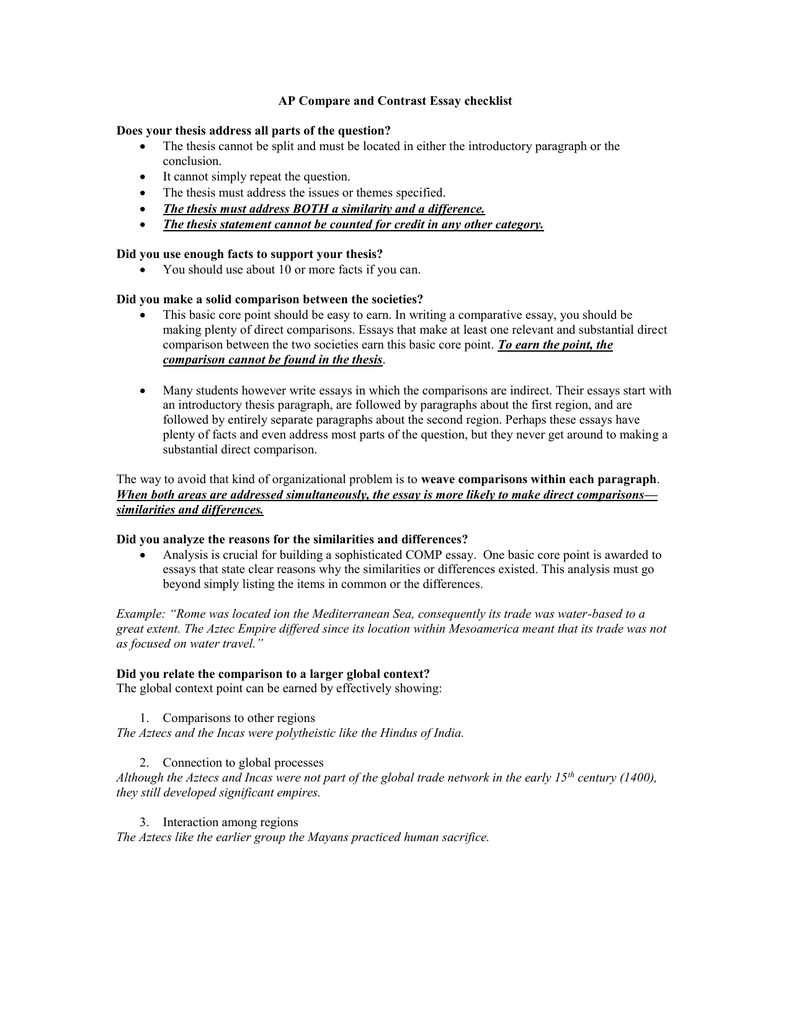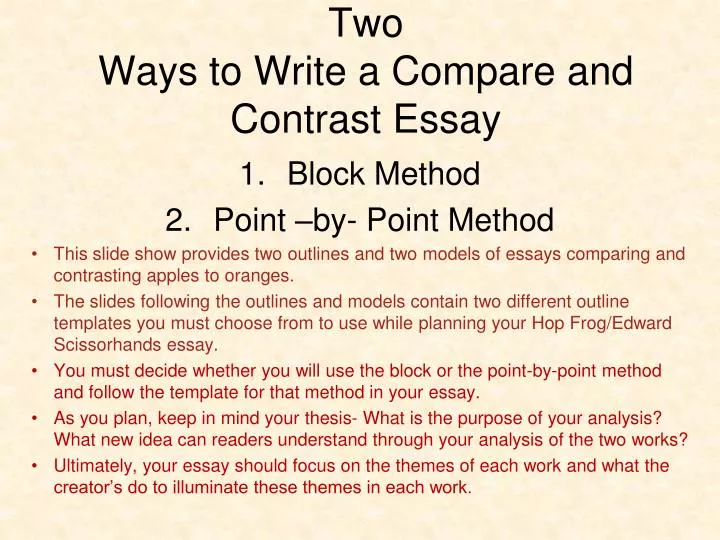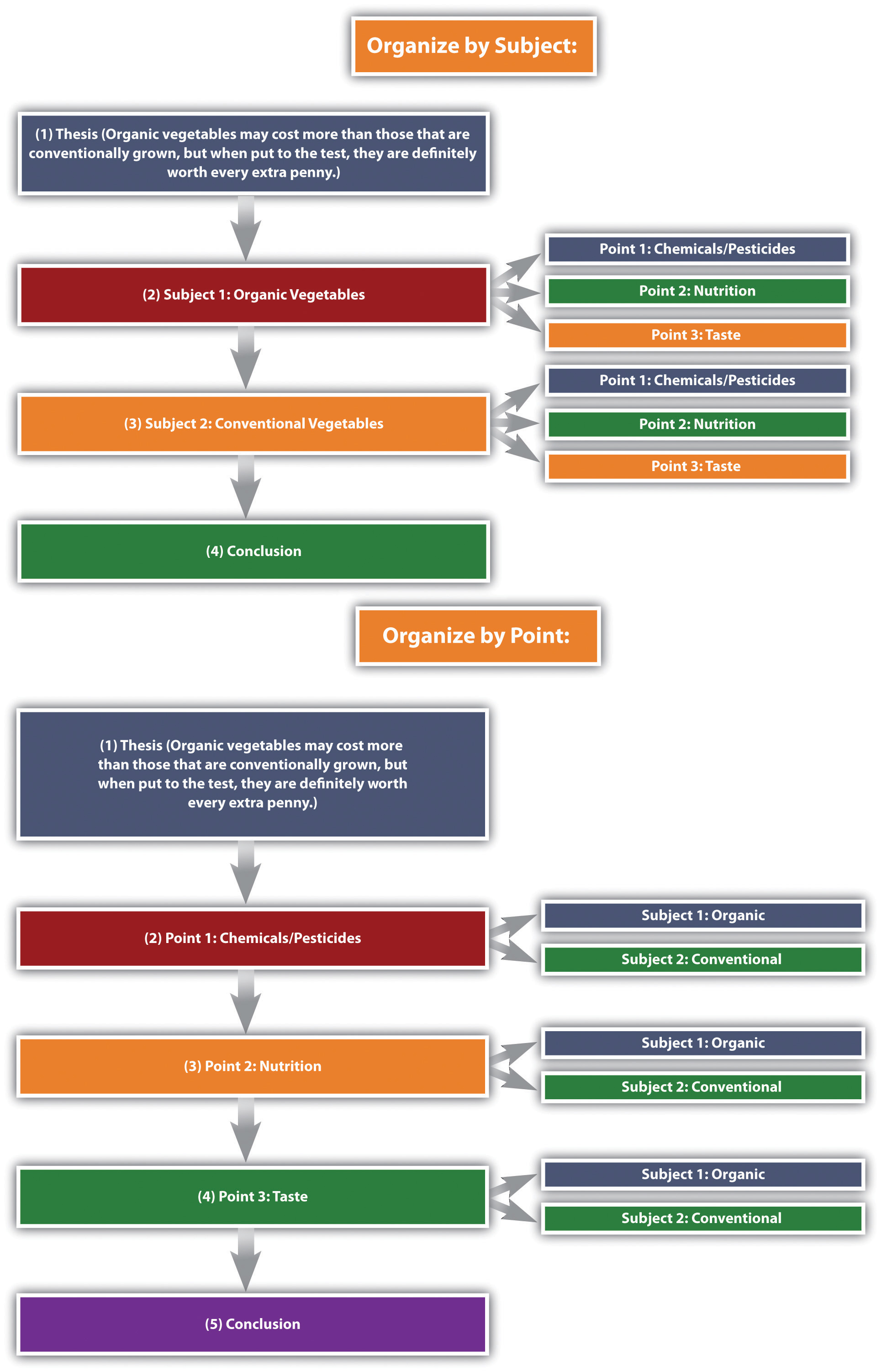A comparative essay is a type of academic writing that involves comparing and contrasting two or more subjects. These subjects can be anything from literary works, historical events, scientific theories, or even people. The purpose of a comparative essay is to analyze the similarities and differences between the subjects being compared, and to evaluate which one is more effective or superior.
One common way to organize a comparative essay is using the point-by-point method. In this method, the writer discusses one point of comparison between the two subjects in each paragraph. For example, if the writer is comparing two novels, they may discuss the themes in one paragraph, the characters in another, and the plot in another.
Here is an example of a comparative essay using the point-by-point method:
Title: A Comparison of "The Great Gatsby" and "The Catcher in the Rye"
Introduction:
In this essay, I will compare F. Scott Fitzgerald's "The Great Gatsby" and J.D. Salinger's "The Catcher in the Rye." Both novels are considered classics of American literature and have been widely read and studied for decades. However, despite their similarities, the two novels have many differences that make them unique.
Paragraph 1: Themes
Both "The Great Gatsby" and "The Catcher in the Rye" deal with themes of disillusionment and the loss of innocence. However, the way these themes are explored in each novel is very different. In "The Great Gatsby," the theme of disillusionment is primarily focused on the character of Jay Gatsby, who is unable to achieve his dreams due to the corruption and greed of the society in which he lives. In contrast, "The Catcher in the Rye" deals with the theme of the loss of innocence through the eyes of its protagonist, Holden Caulfield, who is struggling to come to terms with the complexities of adulthood.
Paragraph 2: Characters
Another significant difference between "The Great Gatsby" and "The Catcher in the Rye" is the way the characters are developed. In "The Great Gatsby," Fitzgerald creates a cast of complex and fully-realized characters, each with their own motivations and flaws. On the other hand, "The Catcher in the Rye" has a more limited cast of characters, with Holden Caulfield as the main focus. While Holden is a fully-developed character, the other characters in the novel serve more as supporting players.
Paragraph 3: Plot
Finally, the plots of "The Great Gatsby" and "The Catcher in the Rye" are very different. "The Great Gatsby" has a more traditional narrative structure, with a clear beginning, middle, and end. The plot follows the rise and fall of Jay Gatsby as he tries to win back the love of his life, Daisy Buchanan. In contrast, "The Catcher in the Rye" has a more episodic structure, with Holden's journey through New York City serving as the main plot.
Conclusion:
In conclusion, "The Great Gatsby" and "The Catcher in the Rye" are two classic novels that have many similarities, but also many differences. Both deal with themes of disillusionment and the loss of innocence, but they explore these themes in different ways. Additionally, the characters and plots of the two novels are also very distinct. Overall, while both novels are excellent in their own right, they offer unique perspectives and experiences for readers.
Genghis Khan was a leader who, through his military genius and leadership skills, united the nomadic tribes of Mongolia and went on to create the largest contiguous empire in history.
Born in 1162 as Temujin, Genghis Khan faced a difficult childhood marked by betrayal, hardship, and struggle. Despite these challenges, he was able to rise to power and unite the warring tribes of Mongolia through a combination of military strategy, political savvy, and charisma.
One of the key components of Genghis Khan's leadership was his ability to create and maintain a strong sense of unity among his followers. He did this by promoting a sense of shared purpose and identity among the Mongols, and by fostering a culture of loyalty and respect within his army. This unity allowed him to build a formidable fighting force that was able to conquer and control a vast territory.
In addition to his military skills, Genghis Khan was also a master diplomat and negotiator. He was able to forge alliances with other tribes and empires, and was known for his ability to mediate disputes and resolve conflicts peacefully. This helped to further strengthen his empire and expand its borders.
Despite his reputation as a ruthless conqueror, Genghis Khan was also known for his fairness and justice. He implemented a system of laws and governance that was based on merit and meritocracy, and he worked to ensure that all members of his empire were treated equally and justly.
Overall, Genghis Khan's leadership was characterized by his military genius, diplomatic skills, and commitment to justice and fairness. These qualities helped him to unite the nomadic tribes of Mongolia and create the largest contiguous empire in history, a legacy that has had a lasting impact on the world.








